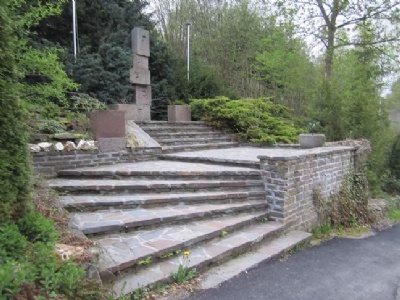Fünfbrunnen
In September 1940, the german regional leader (Gauleiter), Gustav Simon, imposed the Nuremberg laws to Jews in Luxembourg. Until then, the Jews had lived relatively freely without having to face persecution. Between August 1940, and May 1941, Jews in Luxembourg could emigrate to France (the free zone) and Portugal. In May 1941 the germans forbid emigration and in september 1941 the Jews were forced to wear the yellow star of David well visible on their clothing when they were outdoors. In October 1941, the german-approved jewish leader in Luxembourg announced out of the 3,500 jews living in the country in May 1940 (when Luxembourg was invaded), about 750 remained, the others had fled or emigrated. In Cinqfontaines (german Fünfbrunnen), south of Troisverges in northern Luxembourg, the germans had closed a Jesuit monastery in March 1941. The monastery was strategically located near a railway line and became a transit camp for the remaining Jews in Luxembourg who were to be deported to Eastern Europe. As a cover, the Germans called the monastery Judische Altersheim (Jewish retirement home).
The first seven Jews arrived in August 1941 and by the end of the month the number had increased to about 100. The first (and largest) transport departed on October 16, 1941, when 324 Jews were deported to the ghetto in Lodz. In October, construction of nine barracks began right next to the monastery. During winter of 41/42, 23 Jews died in the monastery due to hardship caused by the incarceration. Until the Germans liquidated the camp in June 1943, nearly 700 Jews had been deported to eastern Europe. In September 1943 Luxembourg was declared Judenrein. Only a few who were in hiding or married to aryans remained.
Current status: Preserved with monument. (2012).
Location: 50°06'28.35"N 6°00'24.25"E
Get there: Car.
Follow up in books: Gilbert, Martin: The Holocaust: A History of the Jews of Europe During the Second World War (1987).


None of the wooden barracks remains, but the monastery still exists even if there is no longer any kind of activity. There are discussions about whether a museum should be opened in parts of the monastery, but in 2012 no decision was made. The monastery is located quite far out in the countryside in a smaller valley.